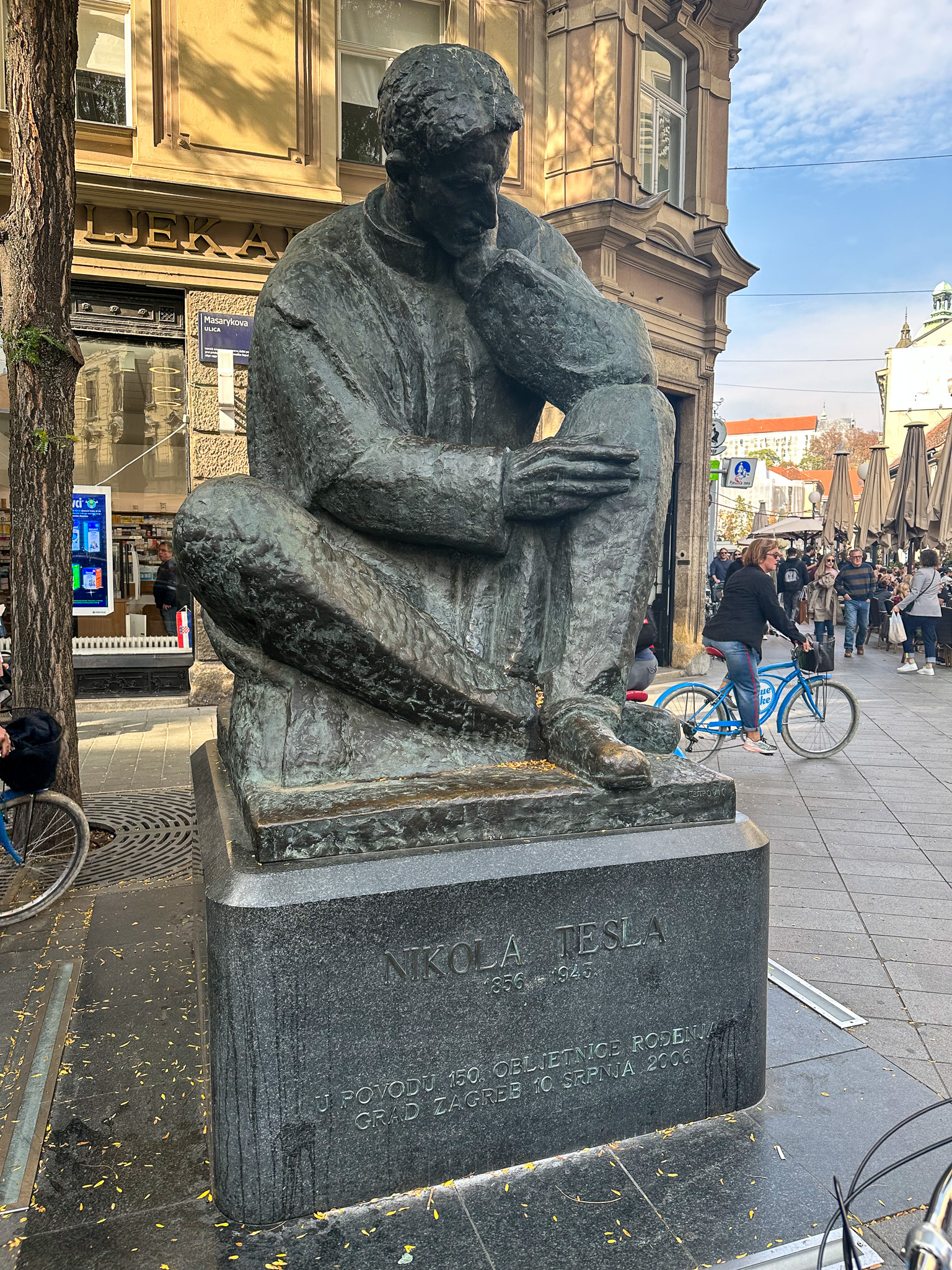We left Sarajevo this morning and drove to Zagreb, the capital and largest city in Croatia. We stopped long enough to go on a bike tour of the city, grab a few bites to eat, and then we drove back to where it all started in Ljubljana, Slovenia for our fight home.
Dragon Cities
Both Ljubljana and Zagreb are cities that celebrate dragons being tamed and killed. Ljubljana has the legend of Jason and the Argonauts founding the city after slaying a dragon, and let’s not forget about the legend of Saint George and the dragon. There are several sculptures and statues of Saint George and the dragon throughout Zagreb and the official crest of Ljubljana has a dragon sitting on top of the Ljubljana castle. The dragon that was tamed and slain is most likely a symbol representing paganism and how Christianity overcame it. In fact, Saint George was a member of the Praetorian Guard for Roman Emperor Diocletian (who built his palace in Split), but was put to death for refusing to abandon Christianity and offer sacrifices to the pagan gods of Rome.
It’s interesting to me how different Zagreb feels from Split. They are the two largest cities in Croatia and they couldn’t feel more different. Split feels very much a Mediterranean city like Athens or Tel Aviv, but Zagreb feels like Austria. Indeed, Zagreb was an important city in the empire of Austria-Hungary. The yellow and black buildings built in the typical Habsburg style give that away. The leader of our bike tour even said the language spoken in Zagreb is almost identical to that spoken in Belgrade, Serbia… closer than that spoken in Split. That definitely tracked with how different Split felt from Zagreb to me.
One of the first things we saw on the bike tour was the big gold ball. It gets cleaned about once a year, but it gets fresh graffiti a few days later. It’s not just a giant gold ball. It represents the Sun. Some mathematicians/astronomers/artists in Zagreb have installed balls representing the solar system throughout the city. They are all proportionally sized and spaced. We didn’t have time to ride to them all. In fast we only saw the sun (giant gold ball pictured below), and Mercury (tiny pea-sized ball quite a ways from the sun). I thought it was a fin idea to have in the city, but it’s too bad about the graffiti.
We rode to a statue of Nikola Tesla. He was born to a Serbian family living in the part of Yugoslavia that is now part of Croatia. The Croats have jumped on the Tesla bandwagon in several big ways. They put a good-sized monument/statue of Tesla in a prominent place in the city. They also will be using Tesla on their Euro currency, to the dismay of Serbia. They both claim Tesla, but Croatia is in the EU and Serbia is not (yet). So Croatia can do what it wants with its currency design and Serbia can’t do anything to stop them. Our guide was very proud of that.
The Earthquakes
A lot of the older buildings in Zagreb are closed for reconstruction following a couple large earthquakes in recent years. In the early days of the COVID-19 pandemic, on March 22, 2020, a magnitude 5.5 earthquake hit just 4 miles from the center of Zagreb and damaged thousands of older buildings. There were lots of aftershocks, including a 5.0 magnitude quake just 2 days later. Almost 2000 of the damaged buildings were declared completely unusable. Then on December 28, 2020 a magnitude 5.2 earthquake struck about 30 miles southeast of the city. The very next day that 5.2 earthquake was reclassified as a “foreshock” because a much larger quake, measuring magnitude 6.4 (more than 10 times more powerful than the 5.2 foreshock) struck, killing several people and completely demolishing about half the buildings in the town of Petrinja.
For us, the earthquakes meant we saw a lot of boarded up and closed buildings, scaffolding surrounding some of the more famous ones, including the big cathedral. They have all been closed for more than 2 and a half years now. Reconstruction and retrofitting of these historic buildings is both time consuming and extremely expensive, so the work is slow going.
Secret Tunnels
Zagreb was fortunate to not see the kind of fighting and bombing that happened to Sarajevo during the breakup of Yugoslavia and the Bosnian War. The city has a huge network of tunnels under the city that we were able to visit on our bike tour. Many of the residents only discovered the existence of the tunnels when the bomb sirens went off during the Bosnian War and officials directed people into the tunnels. Since then, the tunnels have been improved with concrete floors and lighting. We walked our bikes through one of the tunnels, taking a short-cut across the city. It was really interesting.
After the three hour bike tour was over, we jumped back in the van and drove back to Ljubljana for our final dinner before flying home. It was another great trip.










